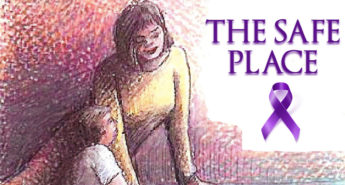 June is starting a little wet here in the River Valley, but with that rain comes beautiful flowers to fill the air with a lovely fragrance, clean air to breathe, and streams flowing for us to enjoy.
June is starting a little wet here in the River Valley, but with that rain comes beautiful flowers to fill the air with a lovely fragrance, clean air to breathe, and streams flowing for us to enjoy.
June also brings Post Traumatic Stress Disorder or PTSD awareness month. When people typically think of PTSD, they think about soldiers that have been off to war, but people do not usually think of children. However, children are affected daily by trauma, thus causing PTSD in children.
Every year there are three million reports to Child Protective Services in the United States that involve 5.5 million children. Thirty percent of these cases are substantiated with evidence. That means almost 1.65 million children are affected by some form of trauma. The forms of abuse include: 65% are neglect, 18% are physical abuse, 10% are sexual abuse, and 7% are psychological (mental) abuse. PTSD can also be caused by the sudden loss of a loved one, being involved in a severe accident, sustaining a severe injury, witnessing domestic violence at home, losing their home from fire or flood, or community issues.
Not every child will have PTSD from their trauma, but it is estimated that 3%-15% of girls and 1% to 6% of boys will develop PTSD from childhood trauma. There may not be signs of PTSD for some time. Something could trigger their memory years down the road that could cause the PTSD onset.
Signs and symptoms can occur differently in each person. Some of the signs to watch for can include: sadness, withdrawn mood, feeling jittery or on edge, easily startled, intense anxiety, or aggressive. These are just a few signs of PTSD. Commonly overlooked symptoms can include psychosomatic symptoms, anger outbursts, sudden clingy behavior, loss of focus and restlessness, and/or avoidance or wanting to run away.
Children can have a more difficult time recognizing that the frightening thoughts and sensations they feel during flashbacks and memories of the trauma are not real. The trauma is not actually happening again. A child with PTSD is more likely to physically react to the traumatic thoughts and feelings- for example, screaming, hiding, or fighting.
There are four stages to PTSD.
Stage 1: Impact or “Emergency” Stage
This phase occurs immediately after the event that causes PTSD. Persons in this stage usually have a difficult time dealing with the traumatic event that occurred.
Stage 2: Denial Stage
Not everyone experiences this stage. Individuals that do will continue to experience intense feelings brought on by memories. Those affected will attempt to avoid the difficult emotions.
Stage 3: Short-Term Recovery Stage
This phase addresses immediate solutions to the problem. Those that are suffering from PTSD will attempt to adjust to everyday life and return to a sense of normalcy. Individuals will either accept help from others or will become disillusioned and somewhat cynical. This stage is where nightmares and intrusive thoughts continue and make everyday life difficult.
Stage 4” Long-term Recovery Stage
As the name implies, the individual will continue to deal with the after-effects of their trauma, such as anxiety and nightmares. However, with treatment, these negative symptoms can be reduced and eventually completely overcome. With constant support from family, friends, and professionals, people with PTSD can expect to return to a calmer, fuller life on the other side.
Now that you understand the stages of PTSD, you can help your child by giving them time to overcome post-trauma stress and make sure you keep your communication channel open. It is common to experience flashbacks to the event that caused the trauma. Ask your child if they are having flashbacks or experiencing nightmares of the trauma. If the PTSD lasts more than a month, you should consider therapy for your child to help them work through what they are feeling.
If you notice unusual behavior or are concerned that your child has PTSD, you can contact the National Alliance on Mental Illness (NAMI) at 800-950-NAMI or 1-800-950-6864. You can also contact the Child Advocate at The Safe Place by calling 501-354-1884.
If you or anyone you know is experiencing domestic violence, please call The Safe Place at 501-354-1884 or call the hotline at 800-554-2501. The Safe Place office in Perryville’s number is 501-889-2030.




Leave a Reply